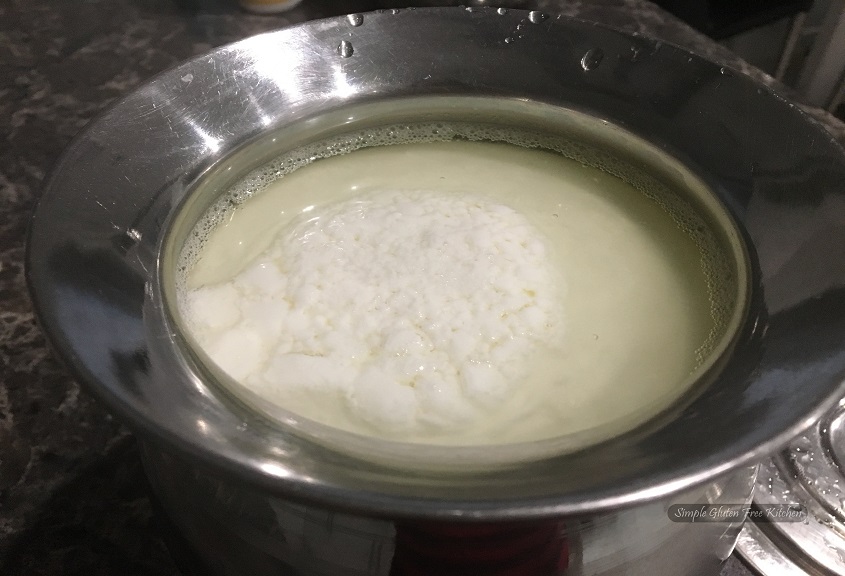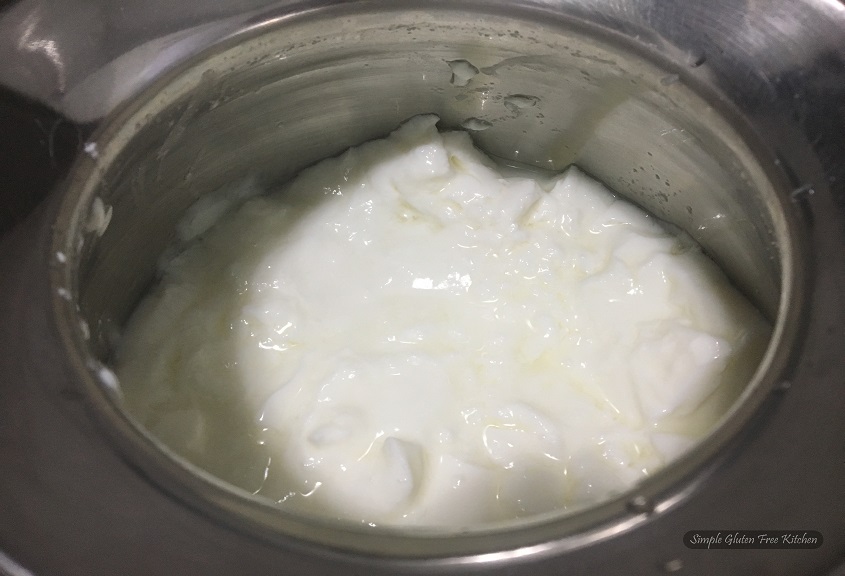Yogurt is a staple in Indian kitchen and most households make fresh yogurt everyday or once every week. It is extremely versatile and is used in countless ways in both sweet and savory recipes.
There are number of health benefits of this versatile dairy product. It is especially high in calcium, B vitamins and trace minerals, which can help improve bone health and protect against osteoporosis. Apart from this, it improves the quality of the gut microbes and helps in maintaining a healthy gut. Clinical studies show that people who have trouble digesting lactose (the natural sugar found in milk), fresh yogurt is much easier to digest (if your lactose intolerance is not severe). Yogurt bacteria contain high levels of the lactase enzyme and this enzyme acts in the intestine to help digest the lactose. So eating yogurt is like taking a digestive enzyme supplement.

Yogurt made from 1% milk. Strain the whey if you want to.
Making yogurt at home is not difficult at all, it is a little time consuming but in the end you have something that’s a treat for you and your family.
What do you need to make homemade yogurt?
To get started, you’ll need two ingredients milk and the starter. No fancy equipment needed. I am going to give you the recipe how I have seen my mom made it and I believe most moms would make it in a similar way. Though, If it is your first time a digital thermometer with an alarm would certainly be helpful. Making your own yogurt gives you the freedom to use any milk you like – from skim milk to cream. For eating with meals I make low fat yogurt with 1 % milk but for desserts and gravies I use whole milk.
To keep the cycle running of fresh home made yogurt supply I make sure I save a quarter cup as a starter to make more home made version. For the first batch you can use store bought starter but make sure it contains live culture and does not have any additives or ask an Indian friend or someone who makes their own yogurt to give you a sample. Nobody will refuse. Then once you have your own yogurt save few spoons to start the next batch. Use it within a week, or it may not contain enough live cultures to work.

After straining the whey
Ingredients
- 1 liter milk (skim, 1%, 2%, or whole organic milk)
- 2 tablespoons plain yogurt
Instructions
- Pour milk in a clean heavy bottomed saucepan, bring to a boil at medium heat, stirring occasionally to prevent scorching. Stay close, because the milk will froth up and as it begins to boil it will rise up swiftly in the pan. Remove from the heat immediately or for thicker yogurt, turn the heat down low and simmer the milk for 5 minutes.
- You can transfer milk in a glass or steel bowl. Let it cool down until just warm.To check, stick your finger into milk and if it can withstand being swirled in the milk for ten seconds ( or count up to 20), the milk is warm enough to add the starter. When you are new to yogurt-making, a digital quick read thermometer with an alarm is helpful. It will warn you when the milk reaches 115 degrees F (which is the ideal temperature for setting yogurt). Arriving at this temperature can take a while.
- Spoon a few tablespoons of the milk at this temperature into the yogurt starter, then stir that starter yogurt into the milk.
- Cover the bowl. Set it aside, undisturbed, in a warm spot for anywhere from 8 to 12 hours, or overnight, wrapped in a towel or woolen blanket. I place the bowl in a plastic grocery bag and put it in the oven ( if you do the same just make sure you don't accidentally turn the oven on with yogurt inside).
- Once the yogurt is done incubating, refrigerate to further set the yogurt before eating. You can eat plain yogurt with your meals, strain to thicken for dips and gravies or dress it up with fruits, or tasty, lower-sugar ingredients for a snack.

Recent Comments